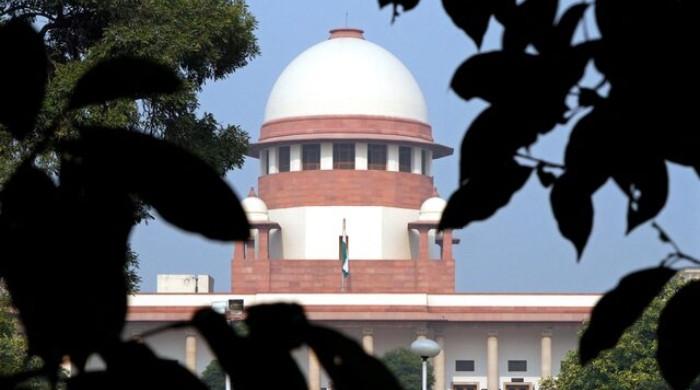Indian Supreme Court Upholds Urdu Signage, Emphasizes Linguistic Diversity
The Indian Supreme Court recently delivered a noteworthy judgment, affirming the use of Urdu on a municipal council building signboard in Maharashtra. The ruling underscores the importance of linguistic and cultural diversity within the nation.
A panel of Justices Sudhanshu Dhulia and K Vinod Chandran asserted that “language is culture” and should serve as a unifying force rather than a divisive one. They lauded Urdu as “the finest specimen of Ganga-Jamuni tehzeeb or the Hindustani tehzeeb.”
The apex court dismissed a petition from a former councillor who contested the use of Urdu on the Patur Municipal Council building’s signboard in Maharashtra’s Akola district.
The court declined to challenge the Bombay High Court’s previous decision, which stated that the use of Urdu is not prohibited by the Maharashtra Local Authorities (Official Languages) Act, 2022, or any other existing law.
Justice Dhulia, penning the judgement, expressed the court’s views on Urdu and languages in general, advocating for a reassessment of potential biases.
The Supreme Court declared, “Our misconceptions, perhaps even our prejudices against a language, have to be courageously and truthfully tested against the reality, which is this great diversity of our nation: our strength can never be our weakness. Let us make friends with Urdu and every language.”
The court directly addressed the “misconception that Urdu is alien to India,” affirming that “it is a language which was born in this land.”
Dhulia clarified, “Language is not religion. Language does not even represent religion. Language belongs to a community, to a region, to a people; and not to a religion.”
The court highlighted that the primary function of language is communication: “Before language became a tool for learning, its earliest and primary purpose will always remain communication… The purpose here for the use of Urdu is merely communication.”
“All the municipal council wanted to do was to make an effective communication. This is the primary purpose of a language, which the Bombay High Court has laid emphasis on.”
Multilingualism
The Indian Supreme Court emphasized the country’s extensive linguistic diversity, referencing the 2001 census, which identified 122 major languages and 234 mother tongues. Urdu was noted as the sixth most spoken scheduled language, present throughout most of India.
The 2011 Census further increased the count of mother tongues to 270 (for those with at least 10,000 speakers), suggesting that the actual number could be in the thousands.
Addressing the historical context, the court acknowledged that the “prejudice against Urdu stems from the misconception that Urdu is alien to India.” It clarified that Urdu, like Marathi and Hindi, is an Indo-Aryan language that evolved in India to facilitate intercultural communication.
“Over the centuries, it attained… greater refinement and became the language of choice for many acclaimed poets,” the judgement stated.
The court also highlighted the widespread influence of Urdu in everyday Hindi and even in Indian legal terminology, citing examples such as “adalat” (court), “halafnama” (affidavit), and “peshi” (appearance before court), as well as terms used in the top court like “vakalatnama” (document of power of attorney).
It was also noted that several Indian states and union territories have recognized Urdu as a second official language.
The court observed, “When we criticise Urdu, we are in a way also criticising Hindi, as, according to linguists and literary scholars, Urdu and Hindi are not two languages, but one language.”
The court stated that “under Article 343 of the Constitution, Hindi is the official language, while the use of English was made permissible for official purposes for a period of 15 years.”
“But this does not mean that Hindustani and Urdu have become extinct. This was never the intention of the framers of the Constitution.”
“Even today, the language used by the common people of the country is replete with words of the Urdu language, even if one is not aware of it.”
In conclusion, the Supreme Court bench upheld the High Court’s decision, affirming that a municipal council’s use of Urdu on a signboard alongside the official language (Marathi) is a matter of effective communication and should not be opposed if it serves a segment of the local population.
“Language is a medium for exchange of ideas that brings people holding diverse views and beliefs closer and it should not become a cause of their division,” the bench firmly stated.



Comments (0)
No comments yet. Be the first to comment!
Leave a Comment